At the start of the new year, many consumers are focused on New Year’s resolutions, such as improving their health and fitness. Many look to fitness tech to help keep them motivated or strengthen their ability to workout effectively at home. So, let’s look at the best fitness tech on the market in 2024.
Table of Contents
Overview of the global fitness tech market
Benefits and features of wearable fitness tech
Best wearable fitness tech
Benefits of at-home fitness tech
Best at-home fitness tech
Further reading
Overview of the global fitness tech market
The wearable fitness technology market was expected to reach US $12.4 billion by 2023 and US $33 billion by 2033, growing at a compound annual growth rate (CAGR) of 10.2%. Wearable tech that includes fitness and wellness monitoring is seamlessly integrated into everyday attire with new looks, fashion-forward designs, and interchangeable bands to appeal to a wide variety of consumers.
In addition to wearable tech, consumers look to tech they can use at home to supplement their workout routines. The global fitness equipment market value was estimated at USD 16.04 billion in 2022 and is expected to grow at a CAGR of 5.3% from 2023 to 2030.
Note that these numbers include a wide range of products designed for both residential and commercial applications, catering to individuals, fitness centers, gyms, and sports clubs. However, Business Fortune Insights notes the global home fitness equipment market is projected to grow from US $11.60 billion in 2023 to US $16.56 billion by 2030, at a CAGR of 5.2% during the forecast period.
The global market has experienced significant growth in recent years due to rising health consciousness and growing awareness about the importance of regular exercise.
Benefits and features of wearable fitness tech
Wearable fitness tech refers to electronic devices worn on the body, typically in accessories such as wristbands, watches, clothing, or smart eyewear. These devices are equipped with various sensors and technologies to monitor and track fitness-related metrics and health data. The goal is to help individuals maintain a healthy and active lifestyle by providing real-time feedback and insights into their physical activities and overall well-being.
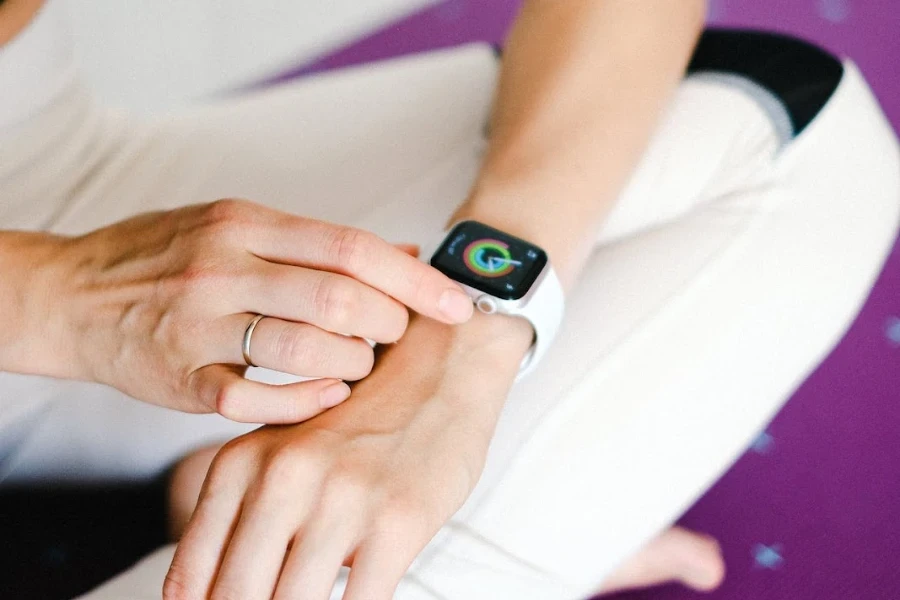
Some typical features of wearable fitness tech include:
- Activity tracking: Monitoring steps taken, distance traveled, and calories burned throughout the day.
- Heart rate monitoring: Continuous measurement of heart rate during different activities to gauge cardiovascular health and intensity of workouts.
- Sleep tracking: Analyzing sleep patterns to provide insights into the quality and duration of sleep.
- GPS tracking: Tracking the user’s location and route during outdoor activities like running or cycling.
- Smart notifications: Directly receiving notifications for calls, messages, and app alerts on the wearable device.
- Calorie tracking: Estimating the number of calories burned based on activity level and other factors.
- Health metrics: Some advanced wearables can measure additional health metrics such as blood oxygen levels, stress levels, and skin temperature.
- Fitness coaching: Offering personalized workout recommendations, guidance, and tips to help users achieve their fitness goals.
Best wearable fitness tech
The most popular wearable fitness tech in 2024 is fitness trackers like Fitbits and smart watches/sports watches. A fitness tracker is more basic and budget-friendly, while smartwatches have a wider range of features, but you may have to compromise on battery life.
Before we jump into the standout products, here is more information about these fitness tech categories (fitness trackers/bracelets and smartwatches/sport watches) to help you understand the market and consumer needs.
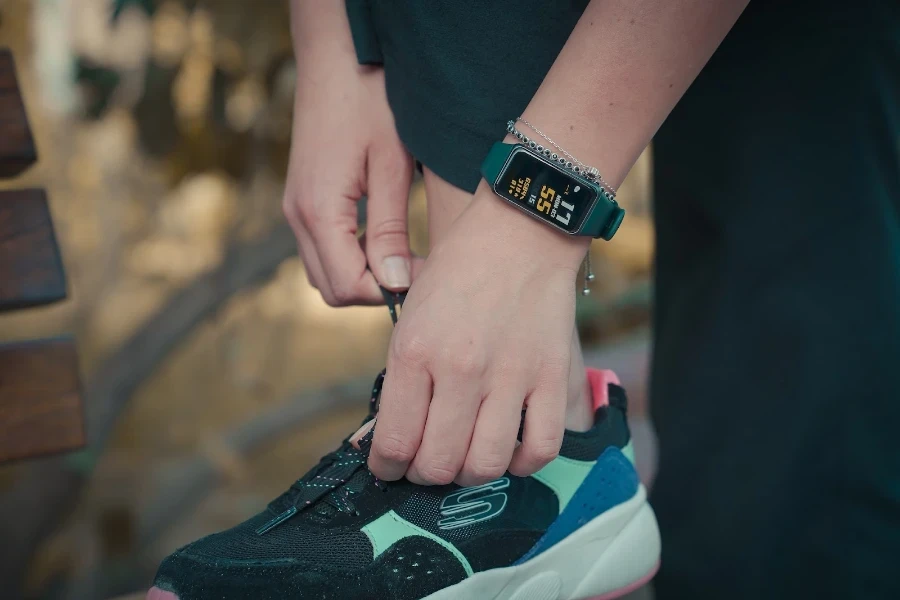
Here are some popular wearable fitness tech devices at the beginning of 2024:
- Fitbit: Fitbit is a well-known brand in the fitness tracker market. The Fitbit Charge offers a variety of fitness and health-tracking features, including heart rate monitoring, sleep tracking, and built-in GPS. For those looking for a more budget-friendly option and whose priority is counting steps and tracking sleep, the Fitbit Inspire 3 is a great option.
- Apple Watch: The Apple Watch is a versatile smartwatch with a strong emphasis on health and fitness. It includes features such as advanced heart rate monitoring, ECG, blood oxygen measurement, and a variety of workout tracking options. The Apple Watch is a top choice for those with an iPhone.
- Samsung Galaxy Watch: Samsung’s Galaxy Watch runs on Google’s Wear OS platform and offers comprehensive fitness and health tracking features. It includes a bioelectrical impedance analysis (BIA) sensor for body composition measurements.
- Garmin: Garmin is known for its GPS-enabled fitness watches. Many Garmin watches combine fitness tracking with smartwatch features and include advanced health metrics, sleep analysis, and animated workouts. Garmin is one of the top choices for runners.
- Whoop Strap 4.0: Whoop is known for its subscription-based fitness tracking service. The Whoop Strap 4.0 focuses on recovery and strain tracking, providing insights into the impact of your workouts on your body.
- Amazfit GTR 3: Amazfit, a brand affiliated with Huami, offers the GTR 3 as a stylish and feature-packed smartwatch with fitness-tracking capabilities. It includes health monitoring features like heart rate, sleep, and SpO2 tracking.
For those not into watches or wristbands, check out the Oura Ring. It houses small sensors to monitor your activity, physical and mental health, and sleep. It can monitor your heart rate and keep tabs on your heart rate variability (HRV, a measure of stress), overnight SpO2, and respiration rate.
Benefits of at-home fitness tech
A home gym provides convenience and time savings, allowing workouts anytime without the need to travel. The flexibility of at-home fitness tech enables users to choose various workouts, from cardio to strength training, and provides a personalized fitness experience. It also allows customization to specific fitness goals, and privacy is assured, eliminating the self-consciousness often felt in public gyms.
Additionally, there are cost savings over time due to not needing a gym membership and shared usage in households, making home gyms a practical investment.
Best at-home fitness tech
At-home fitness tech can include a wide variety of types of equipment that can help enhance fitness, from smart treadmills to tech that can help with workout recovery.
These devices often leverage technology to enhance the workout experience, track progress, and provide interactive training.
Here are some examples of the best at-home fitness tech in 2024:
Smart fitness equipment
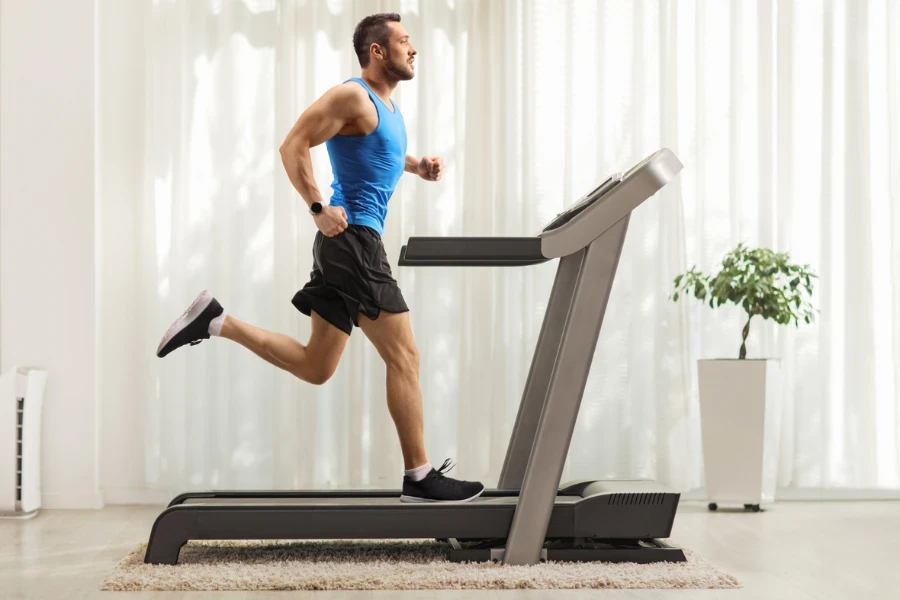
Smart fitness equipment incorporates technology to enhance the workout experience, provide interactive training options, and offer data tracking and connectivity features. These devices often leverage sensors, connectivity, and software to create a more personalized and engaging fitness routine.
- Smart treadmills and exercise bikes: These devices often come with built-in screens or connect to apps to provide interactive workouts, virtual scenery, and performance tracking.
- Smart rowing machines: Similar to smart treadmills, these machines offer interactive training sessions and performance monitoring.
- Smart strength training equipment: Some weightlifting equipment, such as smart dumbbells or kettlebells, can track reps and sets and even provide guidance on proper form.
Interactive home gyms
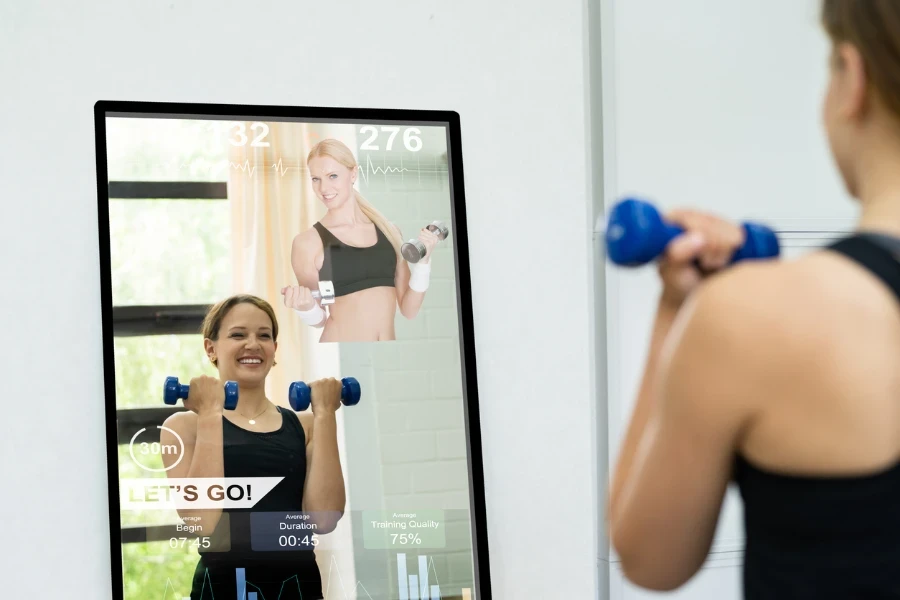
Interactive home gyms are fitness systems that leverage technology to provide users with engaging and personalized workout experiences within the comfort of their homes. These systems typically integrate smart devices, sensors, artificial intelligence, and connectivity to offer interactive and dynamic training sessions.
- Peloton bike and tread: Peloton offers stationary bikes and treadmills with live and on-demand classes, creating a connected fitness experience.
- Mirror and tonal: Devices like Mirror and Tonal are interactive home gym systems that use AI and real-time feedback to guide users through workouts. Mirror is a reflective screen that displays workouts, whereas Tonal is a wall-mounted device with digital weight resistance.
Virtual reality (VR) fitness
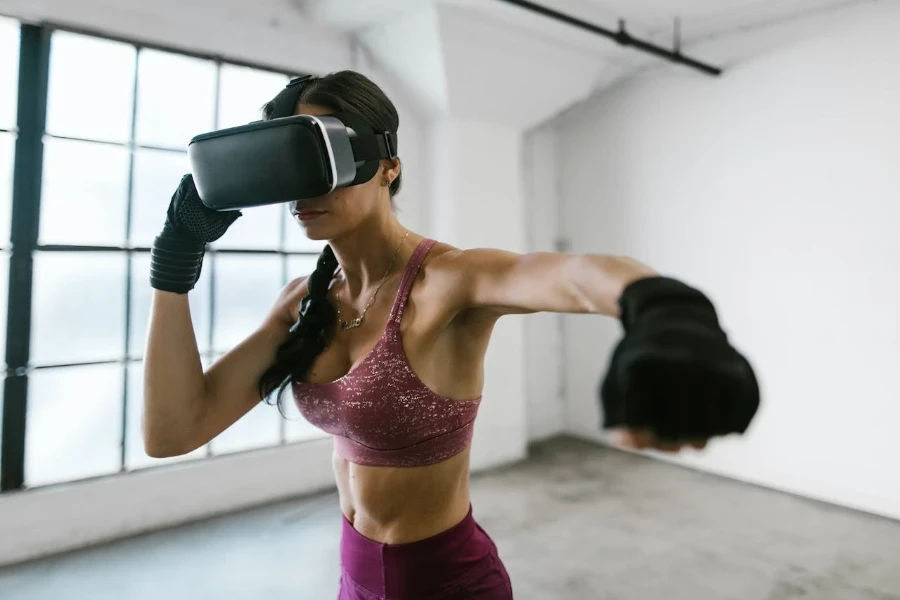
The global market size for VR fitness games was US $11.1 billion in 2022 and is expected to reach $16.2 billion by the end of 2030, growing at a CAGR of 4.7% between the years 2023 and 2030.
Virtual reality (VR) fitness refers to using virtual reality technology to enhance and transform traditional exercise experiences. VR fitness involves immersing individuals in a virtual environment where they can engage in physical activities, workouts, and games. This combination of fitness and virtual reality aims to make exercise more engaging, entertaining, and motivating.
Learn more about the virtual reality headset market here.
Examples of VR fitness platforms and applications include:
- Beat saber: A rhythm-based game where players use lightsabers to slice through blocks in sync with the music.
- Supernatural: A VR fitness app that combines guided workouts with music and immersive environments.
- BoxVR: A boxing-inspired VR fitness game that offers high-intensity workouts.
- FitXR: A VR fitness platform with various workout classes, including boxing and dance.
VR fitness is continually evolving, and new applications and games are being developed to provide diverse and enjoyable workout experiences in the virtual realm.
Other smart home gym accessories

Of course, other smart home gym accessories can assist with fitness; the most popular include:
- Smart jump ropes: Jump ropes with sensors that track jumps, calories burned, and provide feedback on your workout.
- Smart resistance bands: Resistance bands equipped with sensors or Bluetooth connectivity to track exercise intensity and provide data on your workouts.
Smart recovery devices
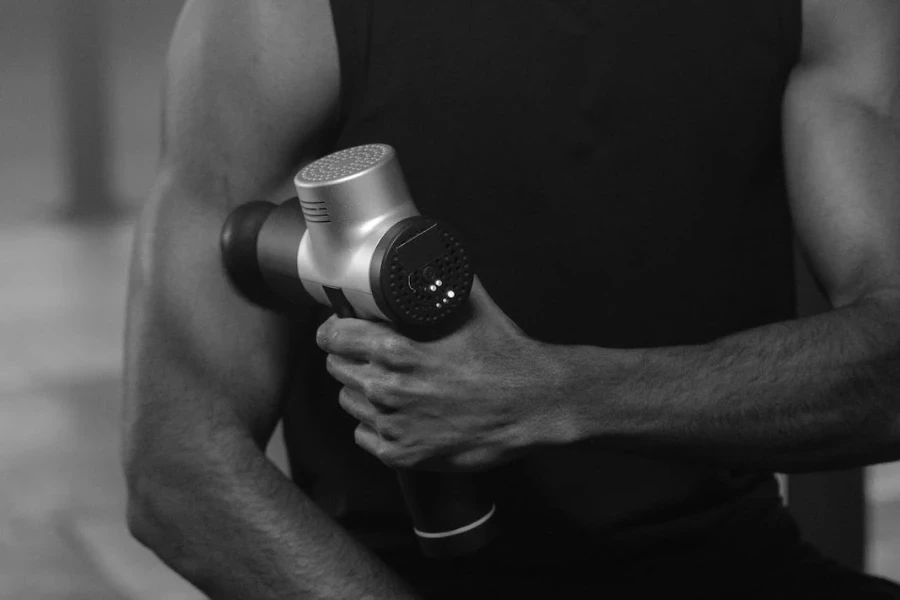
Recovery is a crucial and often overlooked component of fitness. It plays a vital role in maximizing the benefits of exercise and promoting overall well-being. So, fitness tech can also include recovery devices:
- Massage guns: Percussive massage devices equipped with smart features to target muscle recovery and alleviate soreness.
- Foam rollers with vibration: Vibrating foam rollers are designed to enhance self-myofascial release and improve flexibility.
Technology plays a critical role in the fitness industry; stay on top of the latest trends at Alibaba.com.
Further reading
Looking for some more information on fitness products to sell in 2024?



